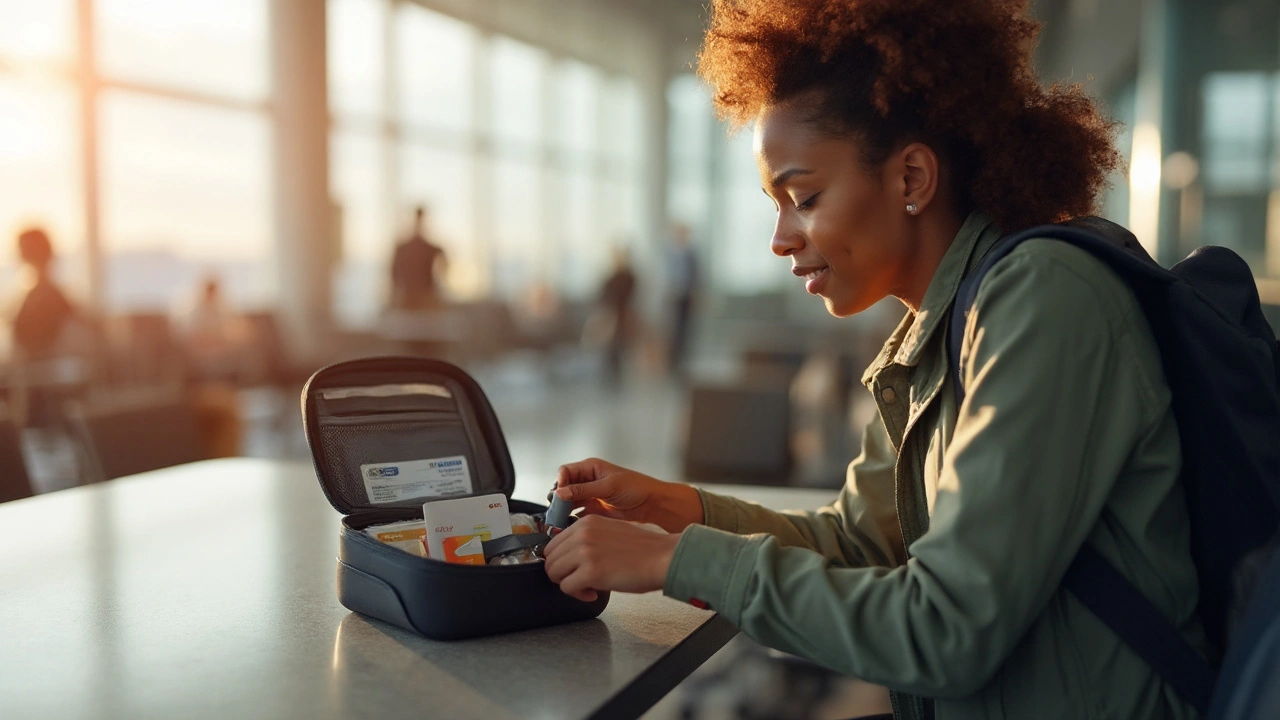COPD Travel Tips: How to Stay Comfortable on Flights, Road Trips, and Vacations
Planning a trip when you have COPD can feel like a hassle, but it doesn’t have to ruin your getaway. With a few simple steps you can keep your lungs happy, avoid surprise flare‑ups, and actually enjoy the journey. Below you’ll find the most useful tips for air travel, car rides, and any kind of vacation that lets you breathe easy.
Before You Go: Prep and Packing
Start by talking to your doctor at least two weeks before you leave. Get a clear prescription for any rescue inhaler or maintenance meds you need, and ask for a short letter confirming your condition. Airlines love that paperwork, and it helps you bring portable oxygen if you need it.
Pack a travel‑ready medication kit. Put short‑acting bronchodilators, maintenance inhalers, and any steroids in a zip‑top bag that’s easy to grab at security. Keep a copy of the doctor’s letter in your carry‑on and another in your checked luggage, just in case.
If you rely on supplemental oxygen, order it early. Many airlines provide oxygen on board, but you have to request it 48‑72 hours before departure. If you’re bringing a personal concentrator, check the airline’s battery policy and make sure the device meets FAA size limits.
On the Move: Managing Symptoms During Travel
On a plane, cabin pressure can feel like climbing a few thousand feet. That can tighten airways and make you short‑of‑breath. Take your rescue inhaler 15‑30 minutes before boarding and again when you feel any tightening during the flight. Stay hydrated – dry air can thicken mucus, so sip water regularly.
Choose an aisle seat when possible. It gives you quick access to the restroom and lets you stretch your legs without disturbing others. If you need to get up often, let the flight attendant know you have a medical condition; they’re usually happy to help.
Driving long distances? Plan rest stops every two hours. Use those breaks to do gentle breathing exercises – inhale through the nose for four seconds, hold for two, then exhale slowly for six. This simple rhythm can keep your airways open and reduce anxiety.
When you’re staying at a hotel, request a room on a lower floor if you’re using portable oxygen; it reduces the need to navigate many stairs. Ask for a non‑smoking room and check that the ventilation system works properly. If the room smells strong (cleaners, perfumes), open a window or ask for a different room.
Finally, keep an emergency plan handy. Write down the nearest hospitals or urgent care centers at your destination, and carry a small card with your medication list and dosage. A quick phone call to your doctor’s office can save you time if symptoms flare up.
Traveling with COPD isn’t a nightmare – it’s just a bit more planning. Follow these steps, stay organized, and you’ll focus on the fun parts of your trip instead of worrying about your lungs. Safe travels!
Traveling with Budesonide Formoterol: Essential Tips & Tricks
Learn how to safely travel with Budesonide Formoterol. Get packing advice, storage tips, paperwork tricks, and emergency plans for asthma or COPD trips.
